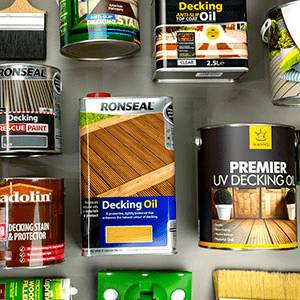Cladding Finish FAQ's
Can I prevent wooden cladding from turning grey over time?
There are a number of exterior wood oils that contain UV filters and stabilisers that are designed to act much like a sun tan cream does to skin. Exterior wood oils such as Osmo UV Protection Oil Extra help to block moisture and UV rays that strip the natural tannin and pigments from the timber. Although these products greatly slow the greying process, they do not stop it completely.
Can I restore the natural colour of wooden cladding that has turned grey?
Products such as Osmo Wood Reviver Gel (6609) can help to restore the natural colour of timber. This said, the process involves scrubbing the gel into the cladding and rinsing off with lots of water after around 15 minutes. This may not be practical for large areas of wooden cladding. An alternative is to use a coloured or pigmented UV resistant exterior wood oil to restore the colour such as Osmo UV Protection Oil Extra.
Can I use any wood oil on cladding?
In simple terms yes but we would always recommend using a dedicated exterior wood oil over traditional oils such as Danish Oil or Teak Oil. Specialist exterior wood oils are formulated with a blend of oils, resins and UV filters that offer better durability, longevity and protection from Sun and weather damage, making them ideal for wooden cladding. These products tend to be available in both clear and coloured formulations so if cladding has been left untreated for a number of years and has turned grey or silver over time, the appearance can be restored.
Do I need to oil wooden cladding?
Wooden cladding can be made from different wood types, Some such as Red Cedar are more resistant to weathering than others. This said, all woods slowly loose there natural oils becoming dry and brittle over time. For this reason we recommend that all cladding is treated with 2 coats of wood preservative followed by 2 coats of a suitable exterior wood oil, preferably prior to installation and on all sides and ends. This helps to keep the wood protected from mould, algae and insect attack as well as keeping the wood supple and weather resistant.
We have just applied western red cedar cladding to our double story rear extension. We want to try and retain the red colour, rather than let it weather. It has been up for 4 months so far and we haven't treated it with anything yet. Should we apply an oil or stain? Any advice would be welcome. Thanks
To help protect the colour of the timber by slowing down the natural greying process caused by UV exposure, we recommend using Osmo UV Protection Oil Extra. this product offers superb durability against weathering including the greying effects of the sun. It also contains biocides to protect the wood against mould, algae and fungal attack.
One thing to bare in mind is that cedar is naturally prone to silvering quickly. Although this is often a reason it is chosen, many customers prefer to retain the natural warm colour of the cedar. Although a clear UV protection Oil will slow down the silvering effects of the sun, it cannot stop it all together and regular maintenance is required to upkeep the level of protection.
An alternative to the clear version of this oil is Osmo UV Protection Oil extra (428) Cedar. The (Cedar) version contains coloured pigments that better protect the natural colour of the wood. It's worth noting that although this product is called 'Cedar' it's likely that it will not specifically match the colour of your Cedar cladding. Both of these products are available in sample sizes. We always recommend doing test areas before starting any project. Apply in an inconspicuous area to assess the final finish.
If required, wipe the cladding with methylated spirits prior to applying the oil to remove any surface dirt or grease from the wood.
What is the best way to protect and preserve wooden cladding?
For the best overall protection, we recommend that wooden cladding is treated with a wood preservative and wood oil before being installed. Ideally, both sides, edges and cut ends should be treated with 2 coats of wood preservative followed by 2 coats of an exterior wood oil. To do this will likely take several days to allow the recommended drying times between the 4 coats but will be worth it in the long run.
Cladding Finishes
- Cladding Oils
- Cladding Stains
- Cladding Varnishes
- Cladding Preservers
- Cladding Paints
- Cladding Cleaners
- Other Cladding Finishes
Related Cladding blog posts
Disclaimer: Whilst every attempt has been made to provide product information that is as accurate as possible, it's important to clarify that trees and the wood that they produce can be affected by many factors. For example, the same species of tree grown in the same wood, even in close proximity, will be affected by age along with the amount of sunlight and water they receive. Other naturally occurring biological and environmental factors will also influence the density and grain of the wood as well as the moisture and oil content of the timber. No two trees are the same, meaning each piece of wood has the potential to look and react differently to the same wood finish. For example, product adhesion, colour variations, absorption rates and sheen levels. It is for this reason that we always strongly recommend carrying out test areas before starting any project


